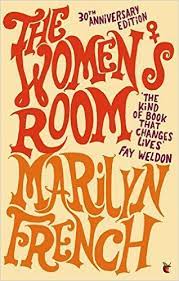Articles/Essays – Volume 12, No. 1
Generalized Hatred | Marilyn French, The Women’s Room
Mira, the protagonist of Marilyn French’s best-selling novel, did not usually buy women’s magazines, but she pored over them at the dentist’s office: “Rate yourself: are you a good wife? Are you still attractive? Are you understanding, compassionate, nutritive? Do you keep your eye-shadow fresh?” Mira had been perfect: she was careful of her husband’s fragile ego, she never struck her children, her house was immaculate. “She had done it all, everything the magazines, the television, the newspapers, the novels, everything they told her she was expected to do.” It wasn’t enough.
Few of us aspire to perfection, but we have an idealized image, even if we resist it, of what we are expected to be as woman, wife and mother. The Mormon culture places unusually heavy burdens on wife and mother. (The same is true of the expectations of man, husband, father, but that’s not what this particular book is about.) Since we almost always fall short of our goals, and it’s easy to forget that we are not alone in our failures, we often bear the additional burden of guilt.
The tyranny of expectations, both externally imposed and internally developed, is just part of the cause of the misery of the women French describes. The stories of Mira’s friends mirror the lives of some women living in the suburbs in the late fifties and early sixties and others living in Cambridge as graduate students in the late sixties who have been victimized by social institutions and oppressed physically and verbally by men. I was often touched by the stories but not because I cared about the women in the novel. It was, rather, because I was reminded of women I have known.
These episodes read like case histories. They are presented to make a point rather than to create a believable world. They are trivial in the root sense of that word—crossroads gossip—commonplace, unshaped by the artistic magic of good fiction, not given the distance that provokes insight or allows catharsis.
The gossip is always absorbing, however, often fascinating. We hear some familiar horror stories: Husbands walk in from work impeccably dressed, demanding services from disheveled women who have been scrubbing floors, chauffeuring children, settling quarrels, wiping up vomit and juggling two different dinners to satisfy schedules and tastes. These men can’t understand their wives’ fatigue; they imagine them gossiping with the neighbors all day or sitting with their feet up in front of the television set, nibbling chocolates or sipping wine. A woman who screams at her husband is placed in a mental hospital where she receives electric shock treatments to restore her domestic docility. A girl is violently raped and accused by police and lawyers of having provoked it. A feminist activist is literally blown apart by police bullets.
The narrative point of view which French adopts is at once the most intriguing and irritating aspect of the novel. We follow Mira through her childhood, her life in the suburbs, a divorce and her enrollment in graduate school. At the same time, a first-person narrator confides in the reader and comments upon characters and action. In an interview (N. Y. Times, Nov. 4,1977), French said that she adopted this split narrator in order to present the experiences of an ordinary woman, with whom her readers can identify, and to provide a perceptive commentator. When she speaks of Mira, the narrator is not overtly condescending. The portrayal of Mira as third-person protagonist, however, reveals more than a little self-hatred. While I would like to know more about the narrator, who realizes some of the ambiguities and paradoxes inherent in a complex life in which one must make choices, I grow weary of Mira, who is self-absorbed, puritanical and egoistically self-congratulatory when she finally shakes off some of her puritanism. Although the device creates a nice tension at first, I can’t quite believe the merging of identities at the end.
Although the book presents episodes and ideas with which all but the most complacent women can identify, representative characters become stereotypes and righteous anger too often becomes unreasoned hatred. I would hope that this novel might make women feel less lonely, that it might articulate unexpressed resentments and help to alleviate guilt. I would also hope that it might make men feel less frustrated about trying to understand women’s resentments. I would even hope that the real injustices documented in the book might arouse the complacent few. However, I fear that the novel polarizes human beings into US-THEM categories.
French warmly describes the strong support and love that women can give to other women, but the sympathy Mira extends to her neighbors and her fellow graduate students she does not extend to her husband or her parents. The narrator says to the reader: “You think I hate men. I guess I do … I don’t like this position. I mistrust generalized hatred.” I do too. We sometimes need anger, in order to act. We also need generous amounts of compassion and forgiveness for men and women alike. Unfortunately, Marilyn French’s compassion, in The Women’s Room, does not include men.
The Women’s Room by Marilyn French. 471 pages. New York: Summit Books, 1977. $10.95. Paper: 687 pages. New York: Jove (Harcourt Brace Jovanovich), 1978. $2.50.


 Back to full Issue
Back to full Issue

